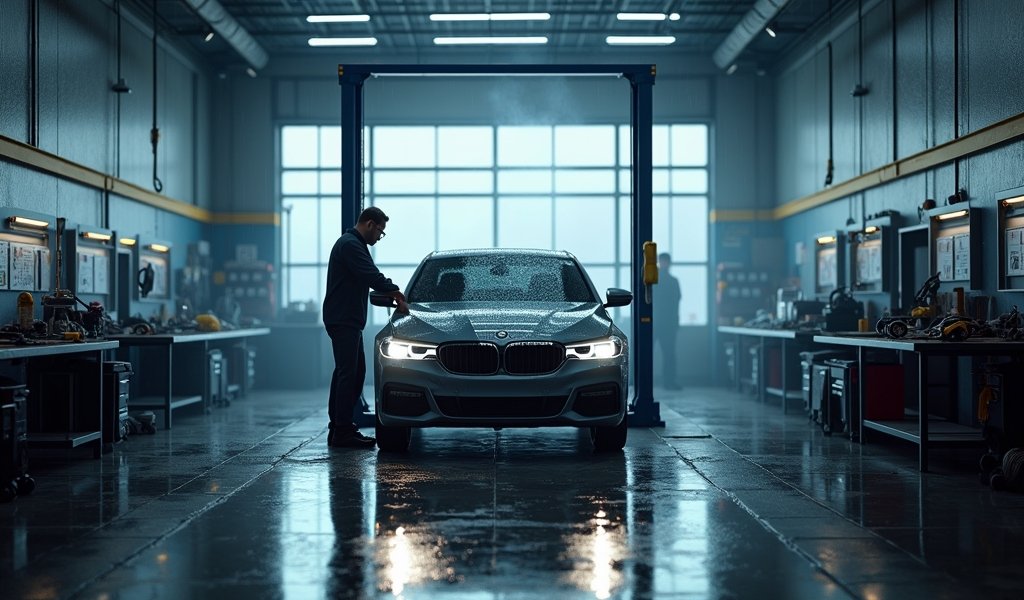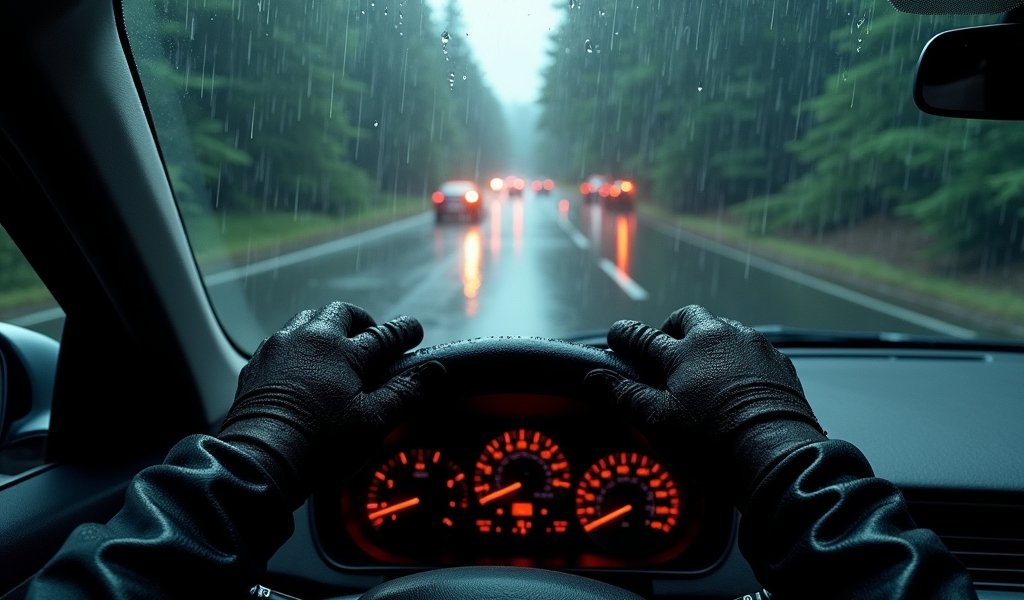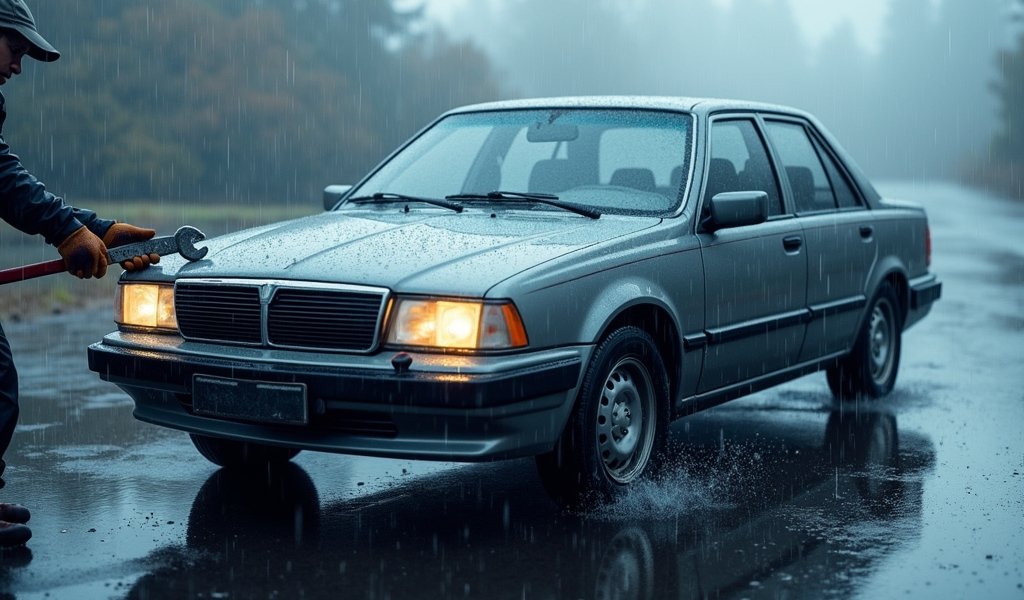Overview
This article details five essential rainy season car maintenance tips: tire inspection for proper tread and pressure, windshield/wiper maintenance for visibility, exterior protection with waxing and undercarriage care, electrical system checks to prevent water damage, and interior protection strategies to combat moisture and mold. Each tip includes professional mechanic insights on why these maintenance tasks are crucial for both safety and preserving vehicle value during wet weather conditions.
Table of Contents
- Introduction to Rainy Season Car Maintenance
- Why Rainy Season Car Care Matters
- Tip 1: Tire Inspection and Maintenance
- Tip 2: Windshield and Wiper Care
- Tip 3: Protecting Your Car’s Exterior
- Tip 4: Electrical System Checks
- Tip 5: Interior Protection Strategies
- Conclusion
- Frequently Asked Questions
Introduction to Rainy Season Car Maintenance
The pitter-patter of raindrops might sound soothing from inside your home, but for your vehicle, the rainy season brings a host of challenges that require special attention. As a mechanic who’s seen the aftermath of rainy season neglect far too many times, I can’t stress enough how important proper rainy season car maintenance tips are for keeping your vehicle running smoothly and safely. Rain isn’t just water—it’s a potential catalyst for rust, electrical problems, reduced visibility, and dangerous driving conditions.
Throughout my 15 years in the garage, I’ve developed a comprehensive approach to rainy season car care that goes beyond the basics. In this guide, I’ll share my top 5 professional-grade rainy season car maintenance tips that will help protect your investment and keep you safe on wet roads. These aren’t just quick fixes—they’re preventative measures that address the specific challenges rain brings to every part of your vehicle.
Whether you’re dealing with occasional showers or months of monsoon conditions, these seasonal car maintenance techniques will help you navigate the wet weather with confidence. Let’s dive into why rainy season maintenance matters before exploring each essential tip in detail.
Why Rainy Season Car Care Matters
Water might seem harmless enough, but when it comes to your vehicle, consistent exposure to rain creates unique problems that can lead to expensive repairs if left unaddressed. The rainy season introduces moisture to places in your vehicle that are designed to stay dry, creating the perfect conditions for accelerated wear and tear.
First and foremost, safety becomes a critical concern during wet weather. According to the National Highway Traffic Safety Administration, nearly 1.2 million weather-related crashes occur each year in the US, with rain being the most common condition. Reduced visibility, decreased traction, and longer stopping distances all contribute to these statistics—factors that proper maintenance can help mitigate.
Beyond safety, there’s the financial consideration. Rain accelerates rust formation, particularly in your vehicle’s undercarriage where road salts and minerals mix with water to create a corrosive cocktail. Electrical systems can short out when water seeps into connections. Even your car’s interior can develop mold and mildew problems that are both unhealthy and expensive to remedy.
The good news? Most rainy season issues are preventable with the right maintenance routine. By implementing these professional-grade tips, you’re not just protecting your car—you’re protecting your wallet from costly future repairs while ensuring your safety on the road.

Tip 1: Tire Inspection and Maintenance
Your tires represent the only four points of contact between your vehicle and the road, and this connection becomes even more critical when that road is wet. As a mechanic who’s pulled plenty of cars from ditches after rainy-day slides, I can tell you that proper tire maintenance isn’t just recommended during the rainy season—it’s essential.
Let’s start with tread depth, your first line of defense against hydroplaning. The grooves in your tires are designed to channel water away from the contact patch, allowing the rubber to maintain grip with the road surface. When these treads wear down, water can’t escape quickly enough, creating a thin layer between your tire and the road—and that’s when control goes out the window.
Here’s a professional tip: Use the penny test to check your tread depth. Insert a penny with Lincoln’s head upside down into your tire’s tread. If you can see the top of Lincoln’s head, your tread is too shallow (less than 2/32 of an inch) and the tire needs replacement. For rainy conditions, I actually recommend a minimum of 4/32 of an inch for adequate wet traction.
Tire Pressure Matters More Than You Think
Proper inflation is just as important as tread depth during rainy seasons. Underinflated tires can’t properly channel water through their treads, increasing hydroplaning risk. Conversely, overinflated tires have reduced contact with the road, decreasing traction on wet surfaces. Check your tire pressure monthly and before long trips, always referring to the manufacturer’s recommended PSI (typically found on a sticker inside the driver’s door jamb).
Don’t forget to inspect for uneven wear patterns, which could indicate alignment issues. Uneven tires perform poorly in wet conditions and can compromise your vehicle’s handling when you need it most. If you notice your car pulling to one side or the steering wheel vibrating, it’s time for an alignment check.
Finally, consider your tire type. All-season tires provide adequate performance in light rain, but if you live in an area with prolonged rainy seasons, dedicated wet-weather tires with specially designed compounds and tread patterns can provide significant safety benefits. These tires remain flexible in cold, wet conditions and have specialized siping (tiny slits in the tread blocks) that help maintain traction on wet roads.
Tip 2: Windshield and Wiper Care
I can’t count how many times I’ve had customers come in with near-miss stories because they couldn’t see properly through their windshield during a downpour. Visibility is your lifeline during rainy conditions, and a properly maintained windshield system is non-negotiable for safe driving.
Let’s start with your windshield wipers—the unsung heroes of rainy day driving. Rubber wiper blades naturally deteriorate over time due to heat, sunlight, and environmental factors. As a rule of thumb, replace your wiper blades every six months, or sooner if you notice streaking, skipping, or squeaking. Don’t wait until you’re caught in a downpour to discover your wipers aren’t performing—that’s a dangerous way to learn this lesson.
When selecting replacement blades, consider upgrading to beam-style wipers, which provide more consistent pressure across the entire blade and generally outperform traditional bracket-type wipers in heavy rain. They may cost a bit more, but the improved visibility is well worth the investment.
Beyond the Blades: Complete Windshield System
Your windshield washer fluid is equally important during the rainy season. Counter-intuitive as it might seem, you’ll actually use more washer fluid in the rain, not less. That’s because rain often brings road grime, oils, and debris that stick to your windshield, creating a hazardous film that can severely impact visibility. Keep your reservoir filled with a quality washer fluid that includes rain repellent properties for best results.
Speaking of repellents, applying a quality rain repellent treatment to your windshield creates a hydrophobic surface that causes water to bead up and roll off, dramatically improving visibility during heavy rainfall. Products like Rain-X or Aquapel can be applied in minutes but provide hours of improved visibility during wet conditions.
Don’t overlook your defroster and ventilation system either. Humidity during rainy weather can cause your windshield to fog up from the inside, further reducing visibility. Make sure your climate control system is functioning properly, particularly the defrost function. A clean interior windshield is less prone to fogging, so regularly wipe down the inside glass with an ammonia-free glass cleaner.
Protecting your car’s appearance starts with visibility, but it extends to every aspect of exterior care during the rainy season.
Tip 3: Protecting Your Car’s Exterior
Rain might seem like nature’s car wash, but nothing could be further from the truth. Rainwater, especially in urban areas, carries pollutants, acid components, and minerals that can damage your vehicle’s paint and undercarriage over time. As a mechanic who’s seen beautiful cars transformed into rust buckets after just a few rainy seasons, I know firsthand how important exterior protection becomes during wet weather.
The most effective defense starts with a proper washing and waxing routine. Contrary to popular belief, you should wash your car more frequently during rainy periods, not less. This removes contaminants before they can bond with your paint. After each wash, apply a quality car wax or sealant that creates a protective barrier between your paint and the elements.
Modern ceramic coatings take this protection to the next level. These silicon dioxide-based treatments chemically bond with your vehicle’s paint, creating a hydrophobic, long-lasting shield that repels water and contaminants for months or even years. While professional application can be costly, there are DIY ceramic coating products that deliver impressive results with some careful preparation and application.
Don’t Forget What You Can’t See
The undercarriage of your vehicle is particularly vulnerable during rainy seasons yet often overlooked. Road spray constantly bathes the underside of your car in moisture mixed with road salts and chemicals, creating perfect conditions for corrosion. Regular undercarriage washing is essential, particularly after driving through flooded areas or on salted roads.
For enhanced protection, consider having an anti-rust treatment applied to your undercarriage. These specialized coatings provide a barrier against moisture and road chemicals. Some service centers offer oil-based undercoating services that penetrate existing rust and prevent further oxidation—well worth the investment for long-term protection.
Don’t overlook your door jambs, hood, and trunk seals either. These areas trap moisture and are common starting points for rust. After washing your car, take a few minutes to dry these areas thoroughly with a microfiber towel. Then apply a light coating of silicone lubricant to rubber seals to prevent them from sticking and to maintain their water-repelling properties.
Remember that exterior protection isn’t just about aesthetics—it’s about preserving your vehicle’s structural integrity and resale value for years to come.

Tip 4: Electrical System Checks
Water and electricity don’t mix—a simple fact that takes on serious implications when it comes to your vehicle during the rainy season. As vehicles become increasingly computerized, protecting electrical components from moisture becomes even more critical. In my years at the garage, I’ve seen countless electrical gremlins caused by water intrusion that could have been prevented with some simple maintenance.
Let’s start with your battery. Battery terminals are particularly susceptible to corrosion, which accelerates during humid, rainy conditions. Inspect your battery terminals regularly for any white, green, or blue crusty buildup. If you spot corrosion, disconnect the battery (always remove the negative cable first), and clean the terminals with a mixture of baking soda and water. After cleaning, dry thoroughly and apply a thin coat of petroleum jelly or specialized battery terminal protectant to prevent future corrosion.
While you’re looking at the battery, check that the battery case is clean and free of cracks that might allow water intrusion. Most modern batteries are sealed, but it’s still worth confirming that the top is clean and that water can’t pool around the connections.
Protecting Vulnerable Electrical Connections
Your vehicle contains dozens of electrical connectors, many of which are exposed to the elements. While they’re designed to resist moderate moisture, heavy or persistent rain can overwhelm these defenses. Pay special attention to headlight connections, engine sensors, and under-hood fuse boxes.
If you notice intermittent electrical issues during rainy weather (flickering lights, warning lights appearing then disappearing, or system malfunctions), you likely have a moisture problem. Professional-grade dielectric grease applied to electrical connections creates a moisture-resistant seal while still allowing electrical contact. It’s inexpensive insurance against costly electrical repairs.
Don’t forget about your alternator. This critical component generates electricity for your vehicle and recharges your battery. The alternator’s cooling vents can allow water intrusion during heavy rain or when driving through deep puddles. While you can’t completely waterproof an alternator (it needs airflow for cooling), you can minimize risk by avoiding deep water and having your alternator inspected if you’ve driven through significant flooding.
According to AAA research, battery failures remain one of the top reasons for roadside assistance calls, with rainy and extreme weather conditions contributing significantly to these failures. A proactive electrical system check before the rainy season can help you avoid becoming part of this statistic.
Tip 5: Interior Protection Strategies
While we’ve focused largely on your car’s mechanical and exterior needs, the interior deserves just as much attention during the rainy season. Beyond comfort, interior moisture issues can lead to electrical problems, unpleasant odors, and even health concerns from mold and mildew growth. In my years as a mechanic, I’ve seen vehicles with beautiful exteriors hiding moldy, musty interiors that drastically reduced their value and comfort.
First, invest in quality all-weather floor mats. The carpeting in your vehicle is difficult to dry once saturated and becomes a breeding ground for mold and mildew. Rubber or thermoplastic floor liners with raised edges contain water, mud, and debris, protecting your original carpeting. After rainy drives, remove these mats, dump out any collected water, and wipe them down to prevent moisture from evaporating into your cabin.
Check that your vehicle’s drain holes are clear and functioning properly. Most cars have small drainage holes in the bottom of the doors and other areas that allow water to escape. Over time, these can become clogged with dirt and debris. Clearing these drains occasionally with a pipe cleaner or compressed air can prevent water from pooling inside door panels and eventually seeping into your interior.
Combating Interior Humidity and Condensation
Your vehicle’s HVAC system is your primary defense against interior humidity. Running your air conditioner occasionally during rainy periods helps remove moisture from the cabin air. If you notice persistent fogging of windows, this indicates excessive interior humidity that needs to be addressed.
For chronic moisture issues, consider using desiccant packets or dehumidifier products designed for vehicles. These absorb excess moisture from the air and can be especially helpful if you must park your car for extended periods during rainy weather. Some can be recharged in an oven and reused multiple times.
Don’t overlook your trunk and storage areas either. Water can enter through taillight seals or weather stripping and become trapped in these enclosed spaces. Check these areas regularly for dampness, and if you notice a musty smell, thoroughly air out the space and consider using moisture absorbers here as well.
Finally, if you often travel with wet items like umbrellas or rain gear, designate a specific area with additional protection (like a plastic bin or waterproof bag) to contain this moisture rather than allowing it to spread throughout your interior.
Conclusion
Navigating the rainy season with your vehicle doesn’t have to be a stressful experience. By implementing these five professional rainy season car maintenance tips—tire care, windshield system maintenance, exterior protection, electrical system checks, and interior moisture control—you’re taking comprehensive steps to protect both your safety and your investment.
Remember that rainy season car maintenance isn’t just about addressing problems as they arise; it’s about preventing issues before they begin. A proactive approach saves you money, extends your vehicle’s lifespan, and ensures reliable transportation regardless of the weather outside.
As we’ve seen, water’s effects on vehicles can be subtle but cumulative. Small leaks become major rust issues. Minor electrical quirks become system failures. Slightly worn tires become dangerous hydroplaning hazards. By addressing each of these areas with professional-grade maintenance techniques, you’re building layers of protection for every aspect of your vehicle.
I encourage you to create a rainy season maintenance schedule based on these tips. Set calendar reminders for regular checks, and don’t postpone necessary maintenance when signs of trouble first appear. Your vehicle is designed to handle rain, but it needs your help to do so optimally for years to come.
Stay dry, stay safe, and keep your vehicle in top condition through every rainy season with these expert-backed maintenance strategies.
Frequently Asked Questions
How often should I wax my car during the rainy season?
Apply a quality wax every 4-6 weeks during rainy periods for optimal protection. Water beading on the surface indicates your wax is still effective; when water stops beading and sheets across the surface instead, it’s time to reapply.
Can I drive through flooded roads if the water doesn’t look too deep?
Never drive through flooded roads as water depth is difficult to judge accurately and just 6 inches can cause loss of control or engine damage. Water can hide dangerous debris, potholes, or even washed-out sections of road.
How can I prevent my windows from fogging up during rainy weather?
Use your air conditioning with fresh air intake (not recirculation) to reduce humidity, and keep your interior glass clean with an automotive glass cleaner. A thin application of anti-fog treatment on interior glass surfaces can also significantly reduce fogging.
Should I run my windshield wipers during light drizzle?
Avoid running wipers on a nearly dry windshield as this accelerates blade wear and can scratch the glass. Use intermittent settings appropriate for the precipitation level or apply a hydrophobic windshield treatment that allows water to sheet off at higher speeds without wipers.
Will driving in the rain damage my brakes?
Regular driving in rain won’t permanently damage brakes, but wet brakes temporarily have reduced stopping power until they dry. After driving through deep water, gently apply brakes several times while continuing to drive slowly to help dry them out before resuming normal driving.

